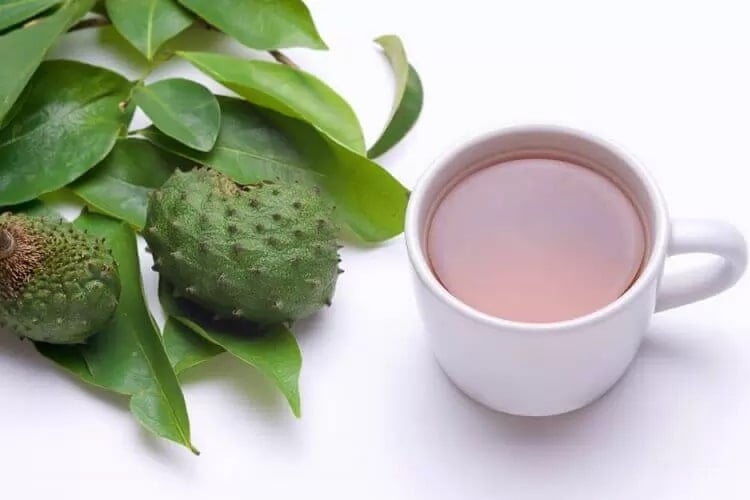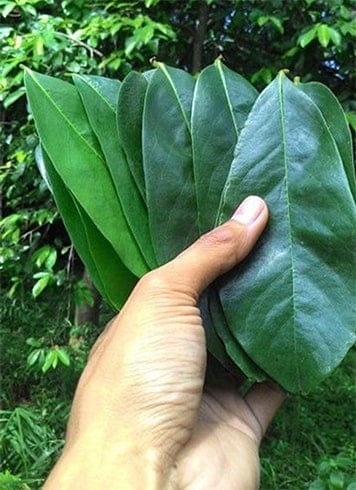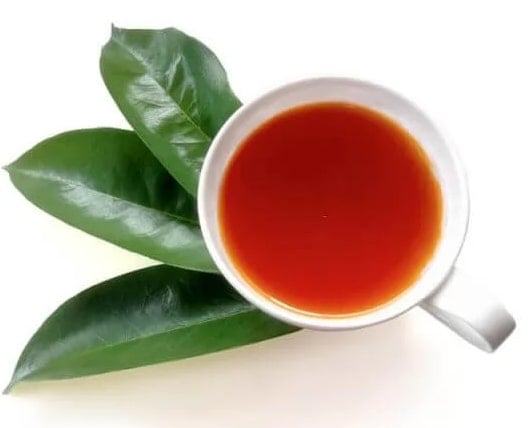[ad_1]
Did you know that Guyabano is also known by other names such as Brazilian paw, soursop, and graviola? The wonder plant is native to South and Central America and serves as a dietary supplement to treat a variety of health conditions. It is gaining popularity because of its natural remedy for pain reliever, viruses and some types of cancer.

Another method to take full advantage of Guyabano leaves is to boil them and drink them as tea. Guyabano tea is easy to prepare. You can add fresh or dried Guyabano leaves to the boiling water. Make sure you don’t keep the tea cold because later it loses its effective benefits.
Let’s learn more about Guyabano Leaf Tea Benefits and other interesting facts below.
What is Guyabano?
Guyabano is the fruit of Annona Muricata, native to the tropical regions of the Americas. The prickly fruit has a strong flavor and creamy texture, similar to a strawberry or pineapple. It is eaten raw or the leaves are brewed to make tea.
Nutritional Value of Guyabano:
A common serving of fruit is low in calories but high in nutrients like vitamin C and fiber. For example, a 100-gram serving of Guyabano contains the following nutrients:
Health Benefits of Guyabano Leaves:
Graviola has a high content of niacin, iron, folate and riboflavin. Various parts of the fruit, including the stems, leaves and fruit, are used for medicinal purposes. It can also be used topically on the skin and for cooking. Studies have also uncovered a number of health benefits of the wonder plant in recent years. Let’s examine them now.
1. High Antioxidants:
The fruit has several benefits due to its high antioxidant presence. These compounds can help neutralize harmful agents known as free radicals. Some studies reveal that antioxidants may play an important role in reducing the risk of diseases such as diabetes, cancer and heart problems.
2. Kill Cancer Cells:
Research for Guyabano is currently limited to test-tube studies. Some studies have revealed that the fruit can potentially kill cancer cells. A test-tube study revealed that it can shrink tumor size, improve immune system activity, and kill cancer cells.
3. Relieve Back Pain:
Sitting in one place for hours can cause decline in health, including back pain. Try a natural remedy like Guyabano tea to ease the pain. Brew the leaves in a pot of boiling water. Drink tea every day to relieve pain.
4. Improves Your Mood:
Did you know that drinking Guyabano tea can help improve your mood and relax you? Drink the tea every day to see results.
5. Stabilize Blood Sugar Levels:
According to a 2008 rodent study, graviola may benefit diabetes by stabilizing blood sugar levels. The study also revealed that the fruit can significantly lower glucose levels in diabetic rats. It is worth noting that there is no study yet on the effects of tea on humans.
6. Helps Digestion:
Guyabano leaves have high vitamin C and fiber content. It can regulate the movement of the gastrointestinal tract. Drinking Guyabano tea has traditionally been used as a natural remedy for constipation.

7. Strengthen the Immune System:
The vitamin C found in Guyabano tea can increase the production of white blood cells. It acts as an antioxidant to treat free radicals and reduce the chances of oxidative stress from body organs.
8. Skin Care:
Guyabano tea has several astringent agents that can help tighten the skin and shrink pores. This is also good for reducing the appearance of fine lines, wrinkles, acne and pore inflammation. Additionally, the antimicrobial substances found in tea can help prevent infections and pathogens from affecting the skin.
9. Eases Anxiety, Depression, and Stress:
Guyabano leaves are popular for their calming and calming effects. It has soothing and anti-inflammatory agents that can help relieve stress and depression. Drinking boiled Guyabano tea after a stressful day can help relax your mind and body. It also has relaxing effects to better cope with the symptoms of depression and anxiety.
10. Eases Gout Arthritis:
The anti-inflammatory agents found in Guyabano leaves help treat gouty arthritis. The main reason for this is the kidney’s inability to clear purine substances. Drinking Guyabano leaf tea can treat these symptoms. In fact, the leaf extract is a great remedy to treat gouty arthritis. Boil five to ten leaves with two glasses of water and drink twice a day. You will soon notice a reduction in pain intensity.
Side Effects of Guyabano Leaves:
The side effects of Guyabano tea can be quite serious. It can lead to heart problems, stomach upset, nerve problems, and drug interactions. While some of the benefits of tea are surprising, the risks involved cannot be ignored. Therefore, consume tea in moderation as much as possible.
- Neurotoxic Effects: Studies have shown the presence of neurotoxins in the fruit that can be similar to Parkinson’s symptoms. But these neurotoxins are incorporated into many foods, usually in minimal amounts.
- Digestive system ailment: The antimicrobial and antibacterial effects of tea are effective. However, long-term use can lead to acid imbalance, digestive and gastrointestinal problems.
- Hypotension: If you have low or high blood pressure, you should not overuse soup tea. May cause weakness, fainting, headache and dizziness.
- Drug interactions: People taking antidepressant medications, medications, and tranquilizers for neurodegenerative diseases should consult a doctor before adding Guyabano tea to your regimen.
- Pregnancy: Under no circumstances should a pregnant or breastfeeding woman drink Guyabano tea.
FAQ:
Q. 1. How to dry Guyabano leaves for tea?
a. The simplest way to preserve Guyabano leaves is to dry them. However, it is not recommended to dry it under direct sun as UV rays can damage it. Instead, let the leaves dry at room temperature. Lay them on a flat surface and they will dry naturally in four to five days.
Also avoid washing fresh leaves as it will delay the drying process. Instead, wash it after it dries.
Q. 2. How to prepare Guyabano leaf tea?
a. Brewing Guyabano tea is pretty simple, provided you have fresh or dried leaves at home. You can also add sweeteners such as sugar or honey. The plant is grown locally in some American countries. However, it can be purchased from natural health stores and herbalists.

What are the side effects of Guyabano leaves?
The side effects of Guyabano tea can be quite serious. It can lead to heart problems, stomach upset, nerve problems, and drug interactions. While some of the benefits of tea are surprising, the risks involved cannot be ignored. Therefore, consume tea in moderation as much as possible.
- Neurotoxic Effects: Studies have shown the presence of neurotoxins in the fruit that can be similar to Parkinson’s symptoms. But these neurotoxins are incorporated into many foods, usually in minimal amounts.
- Digestive system ailment: The antimicrobial and antibacterial effects of tea are effective. However, long-term use can lead to acid imbalance, digestive and gastrointestinal problems.
- Hypotension: If you have low or high blood pressure, you should not overuse soup tea. May cause weakness, fainting, headache and dizziness.
- Drug interactions: People taking antidepressant medications, medications, and tranquilizers for neurodegenerative diseases should consult a doctor before adding Guyabano tea to your regimen.
- Pregnancy: Under no circumstances should a pregnant or breastfeeding woman drink Guyabano tea.
Contents:
- 6 Guyabano leaves, fresh or dried
- 1 teaspoon honey (if desired)
Instructions:
- Step 1- Add water to a stainless steel pot and bring it to a boil.
- Step 2- Add the leaves and let it boil.
- Step 3- Infuse the mixture for 15 minutes.
- Step 4- Remove the pot from the flame. Filter the mixture.
- Step 5- Add sweetener to sweeten.
How did you find the health benefits of Guyabano tea? Let us know how you found this post in the comments below.
[ad_2]
Source link
